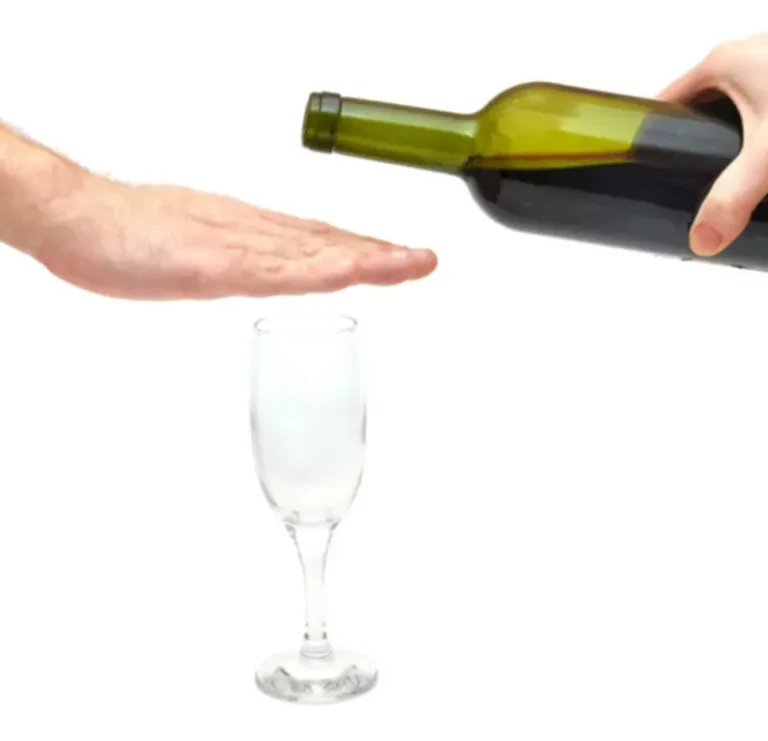-
HER FINNER DU OSS:
Bondistranda 29E, 1386 ASKER
HER FINNER DU OSS:
Bondistranda 29E, 1386 ASKER
24 Nov. 2020
How to Deal with a Covert Narcissist

Following on from that, while you might be adept at making others happy, drawing the line can be a struggle for you. This is especially true if you’ve grown up with a narcissistic mother. So, it’s no surprise that this behavior can carry into adulthood, turning you into someone who constantly seeks validation from others. Because pleasing such a parent often becomes a survival strategy for the child. By keeping the parent happy, the child hopes to avoid conflict and earn their approval.
How to Identify a Covert Narcissist
As a result, many turn to substance abuse to help them cope with their pain. They feel so utterly alone in their suffering that going numb or blissing out through artificial means is one of the only ways they can keep going. This may be compounded by the parent’s criticism and projections toward them. Don’t spend time with them unless you absolutely have to, and if you are obligated to do so, go “gray rock.” Give them no emotional fuel and behave as though nothing they say or do affects you in any way.
Substance abuse and/or self-harm.
This is because those whose narcissistic traits are turned inward rather than outward tend to repress and hide their tendencies. They may be excruciatingly sensitive and introverted, and they are often crippled by insecurity and low self-esteem. If you notice covert narcissistic tendencies in yourself, this self-awareness is a huge step in the right direction! Here are some steps to heal your inner wounds and mend your relationships with people close to you. When you first meet a narcissist, they can be incredibly charming. They may even “love bomb” you with excessive praise and admiration.
General Health
- A key feature of covert narcissism is that there are often discrepancies between how they present themselves in public and how they present in private (Carter, 2022).
- Sometimes people who suffer from covert narcissism have no idea that there is something wrong their behavior.
- But they’re sensitive to criticism and tend to lack empathy, so they may struggle to form healthy…
- Because of their contorted ways of thinking, a covert narcissistic personality can be extremely difficult to deal with.
- She also prepares other counselors for the evolving health care industry in regards to legal and ethical issues, integrated care and changes to practice through technological advances.
- Calling out covert narcissism can be difficult, but it starts with being mindful of behavioral patterns and paying attention to that gut feeling you have when something feels a little off.
This may refer to emotional, physical, psychological, or neglectful forms of abuse. Science of People offers over 1000+ articles on people skills and nonverbal behavior. However, you can plant the idea in their mind and hope they pursue it.
Those who were abandoned or abused as children learned early that their voices didn’t really matter, or that yelling would earn them a punishment, so they learned to get their way via subterfuge instead. Like other cluster-B personality disorders, NPD has various causes—which we will get into later—but they mostly involve trauma during a person’s early development. This trauma changed them on a fundamental level and caused them to develop behaviors that might have never manifested if they’d been raised in different circumstances. For example, Lee Hammock (a mental health advocate and diagnosed Narcissist on TikTok) has shared narcissism and alcoholism that he experienced a lack of empathy from a young age. Instead of feeling bad for his classmate or trying to help him, Hammock reports feeling annoyed that the other kid’s injury would stop their recess.
Is There a Covert Narcissist in Your Life? 18 Things Therapists Need You to Know

As narcissists do not like to lose, they often resist letting someone leave them. They may promise to change their ways or attempt to guilt people into staying with them. The empath may even believe they may be able to change the narcissist or save them. Because of this, they may be more likely to be in long-term relationships with a narcissist. Often, narcissists want to target people who have high levels of empathy.

Covert Narcissism Checklist
- This may be related, in part, to the fact that modern culture places a high value on women’s physical appearance.
- If the narcissist does not realize their behaviors are causing problems, they will be less motivated to seek help.
- Maybe your loved one emotionally withdraws when you offer the slightest criticism.
It’s difficult to say exactly why people with NPD develop covert, rather than overt, traits. However, some research does suggest that NPD is more heritable than various other mental health conditions. Many people with covert NPD may have a parent who displays similar traits. While covert narcissism is usually found in people who are introverted, those with overt NPD (also known as grandiose or agentic narcissism) tend to be extroverts. An individual with covert narcissism has an exaggerated sense of self-importance that may make them behave in arrogant and showy ways.
They’re unable to build meaningful relationships.

Trust your instincts, set boundaries, seek support, and prioritize self-care. By monitoring communication and staying independent, you can navigate this complex dynamic. Remember, it’s crucial to be prepared to walk away from toxic relationships and practice patience throughout the process. Stay true to yourself and prioritize your well-being above all else.
Signs of a covert narcissist:
- People with overt narcissism are typically extroverted, bold, and attention-seeking.
- Communicate this as clearly as you can and cite an example of their behavior if necessary.
- They still qualify for narcissistic personality disorder (NPD), particularly feeling special and wanting admiration (perhaps secretly), lacking empathy, and feeling entitled.
- It’s also common for someone with covert narcissism to blame others for their own mistakes and shortcomings.
- Yet, despite the fact that they may appear to genuinely care for others, they’re motivated by a need for recognition, power over others, or egoistic pride.
For instance, borderline personality disorder, histrionic personality disorder, and antisocial personality disorder all may co-occur with covert narcissism. However, other research does not support the relationship between childhood abuse or trauma and the development of covert narcissism. People with covert narcissism may also avoid social situations or relationships that lack clear benefits. Leaving an abusive relationship or ending a friendship with a covert narcissist may not be easy. Perhaps you love and care about them but now recognize that their behavior is harmful to your own health and well-being.
- By: admin
- Comments: No Comments
08 Oct. 2020
How to Taper off Alcohol Safely and Effectively
If you drink heavily, alcohol withdrawal symptoms can be harsh, dangerous, and even fatal. For this reason, it’s generally best to avoid quitting abruptly, or at bare minimum speak with a doctor first and have someone looking out for you. Reducing alcohol intake can have significant positive effects on mental health. As you reduce your alcohol consumption, you may notice improvements in mood, anxiety, and overall mental well-being.
- Although it is possible to taper your alcohol use alone, professionals highly advise that you seek medical attention.
- Research has shown that professional help improves your ability to overcome an addiction to alcohol or cut back if you have found it difficult.
- Switching to beer from hard liquor is safer because it is easier to control the amount of beer that is consumed and is harder to binge drink.
- This is a key part of understanding how to wean yourself off alcohol safely.
How to safely taper off your alcohol consumption
Minor symptoms of alcohol withdrawal can start as soon as six hours after the last drink of alcohol. Slowly decreasing the amount you drink over time can spare your body from withdrawal symptoms. This is because drinking heavily over a long period can cause your body to become physically dependent on alcohol.
- Getting curious about a life without alcohol is already an incredible step, and a healthier lifestyle is within reach.
- Both methods allow the body to adjust gradually and reduce overall alcohol intake.
- “It’s hard to go anywhere without someone offering you a drink,” says Leah Young, LCPC, Clinical Manager at Pathlight Mood & Anxiety Center.
- Tapering is also a strategy used by people with a substance or alcohol use disorder (AUD).
- Establishing new habits and routines, and dealing with the underlying causes of your drinking habits, are essential to lasting recovery.
It’s crucial to consult with a healthcare professional before starting an alcohol tapering plan. Tapering involves gradually and progressively reducing your alcohol consumption over time. This Sober House Rules: A Comprehensive Overview method can lessen withdrawal symptoms, allowing your body to adjust to decreased alcohol levels slowly. It does, however, result in any withdrawal symptoms that do occur being prolonged over the entire period of the taper.
A person may need to detox at home for many reasons, including cost or time. The second situation involves counting the daily drinks and switching them to a beverage with lower alcohol content, such as beer. Switching to beer from hard liquor is safer because it is easier to control the amount of beer that is consumed and is harder to binge drink. Consuming a lighter alcoholic drink like beer also makes it easier for someone to stay hydrated throughout the taper.
- Guidance for tapering off alcohol can vary, and there’s limited specific advice available.
- However, various strategies can help you cope with these symptoms and make the journey toward sobriety more manageable.
- Tapering involves gradually and progressively reducing your alcohol consumption over time.
- Explore how to wean yourself off alcohol safely, from tapering plans to handling severe symptoms.
- Someone will slowly diminish the amount they drink with the intention of avoiding the symptoms of alcohol withdrawal completely and will hopefully be able to avoid a relapse as well.
Talk to Your Doctor
Attempting to stop drinking “cold turkey” is not only dangerous, but could also cause serious implications or be fatal. Alcohol dependence can lead to fatal outcomes, with rising death rates linked to excessive alcohol use, as reported by Psychology Today. This condition not only affects individuals but also has profound social and economic impacts on families and society at large. As you prepare to wean off alcohol, consider taking the following steps ahead of time to have a clear path to success. Did you know most insurance companies will cover the cost of drug and alcohol detox?
Powerball Can Lead to Gambling Addiction
But, it might also come https://appsychology.com/living-in-a-sober-house/ with seemingly some discomfort or disappointment from friends. Those moments can be thought of as a “them thing, and less of a you thing,” says Shani Gardner, LCSW, a therapist at Soulful Grace Therapy. Switching up your behavior might make people question their own and result in them projecting onto you.
About Samba Recovery
An evidence-based rehab offering holistic and experiential therapies, tailoring treatment to each client on a comfortable campus near Austin. Your body has become used to, and dependent on, certain levels of alcohol. Alcohol depresses your nervous system2, so your body creates more receptors for neurotransmitters, or messengers, to stimulate the nervous system. To successfully taper your alcohol use, finding what works best for you is important. Alcohol proof is the amount of alcohol found in distilled spirits or liquor. Smaller drinks with a higher percentage of alcohol are stronger than the same size drink containing a lower-proof liquor.
Can You Taper Off Alcohol Safely At Home?
Chronic alcohol use also suppresses glutamate activity, the neurotransmitter that produces feelings of excitement. In excessive alcohol users, the glutamate system has to function at a higher level to maintain equilibrium. In summary, while it is possible to wean oneself off alcohol safely, it is essential to be aware of the potential for severe symptoms. It is always recommended to seek professional medical help in these cases to ensure safety and proper care during the withdrawal process.
Mental Health Resources
“Many people still want to enjoy socializing but are mindful of wanting to average one to two drinks per day. They often try to not drink at all during the week, and allow for moderate drinking Friday through Sunday,” Dr Lee said. Below are some ideas to help people reduce their drinking by alcohol tapering. Depending on how much you drink and for how long, one rule of thumb is to avoid cutting more than 25% of your drinking intake at a single time to avoid withdrawal symptoms.
The Impact of March Madness on Addiction
This may work for many people, but in practice each individual will respond best to a different pace, and each doctor will have their own recommendations. The risk of tapering too slowly is that you won’t stick with it, while the risk of tapering too fast is severe withdrawal. If you experience dangerous signs such as high blood pressure, racing heart, or arrhythmias, slow your taper and seek assistance. When you quit through tapering, you drink a little less each day until you’re able to have no alcohol at all.
- By: admin
- Comments: No Comments
13 Feb. 2020
Addiction Treatment: Terms & Definitions
It is a critical component of recovery, especially in contexts such as mental health, addiction, and chronic illness management. To help the newcomer develop a better understanding of recovery or treatment and what it means, we have compiled a common list of addiction recovery words. These include addiction-related terms and phrases, common recovery programs and family programs, and treatment for substance abuse terms and definitions.
- Addiction, a perplexing and often misunderstood affliction, is a labyrinth of terminology that can leave patients, families, and even professionals feeling lost in a sea of jargon.
- Practices that promote physical, emotional, mental, and spiritual well-being in sobriety and are universally seen as an essential component in all forms of recovery.
- Integrated treatment approaches that target both disorders simultaneously have been shown to be the most effective in promoting recovery and improving overall well-being.
- American Society of Addiction Medicine is an association of medical personnel that are dedicated to improving addiction treatment, support research, educate physicians to advance the practice of addiction medicine.
- When discussing addiction recovery, it’s important to understand the distinction between abstinence and sobriety.
Role of Empowerment and Choice
The following terms are used to describe different types of treatments available for substance addictions. Gamblers Anonymous – A 12-step peer support group for those who struggle with problem gambling and have the desire to end the behaviour. Gambling addiction – Repetitive gambling behaviour despite harm and negative consequences. Also known as problem gambling, pathological gambling, or compulsive gambling. Facilitator – A person who is trained to facilitate SMART Recovery meetings.
Does Drinking Alcohol Make You Gain Weight
A dollar amount that an insured patient is expected to pay at the time of service. A central part of the brain, stretching from the brain stem to the front of the cerebral cortex. The reward pathway is stimulated by dopamine in response to actions related to survival-like eating-aswell as other pleasurable activities, like having spending time with friends or listening to music. Greenhouse Treatment Center is a licensed chemical dependency treatment facility in the state of Texas.
Importance of Trauma-Informed Counseling Environments
Breaking this cycle is the goal of recovery, but it’s not always a straightforward process. This is a tricky area because these substances are legal when used as prescribed, but can be just as dangerous as illegal drugs when misused. It’s like having a Bengal tiger as a house cat – potentially useful, but definitely risky. Half way houses, also known sober living houses or recovery houses are places of residence for people newly released from treatment who https://appsychology.com/living-in-a-sober-house/ still require monitoring and support. The addiction recovery process is intimidating — especially when the terms people use sound like a different language. Recovery Connection is the ultimate addiction recovery resource portal for information on the latest treatments, centers, and programs.
Building a Support System
The purpose of detox is to minimize the negative impact of withdrawal symptoms and provide a safe and comfortable experience for individuals seeking recovery. During the detox process, all traces of alcohol and drugs are removed from the body. This allows the person to enter a stable state, both physically and mentally, and prepares them for further treatment and therapy to address the root causes of their addiction. A goal-oriented form of therapy that helps the client to change unhealthy or addictive behaviors and thought processes. Cognitive behavioral therapy is one of the most common forms of behavioral therapy utilized in treatment for substance use and other mental health disorders as well as for relapse prevention. Building a strong support system is crucial in the journey of addiction recovery.
The effectiveness of holistic therapy in addiction treatment
- It is a powder that can be made into a pill or a shiny rock (called a crystal).
- These drugs are designed to reduce depression, anxiety, schizophrenia, bipolar symptoms and a host of other.
- While many individuals find comfort in the structure and community that 12-step programs provide, others seek alternative approaches.
- The development of empathy and compassion is another significant aspect of self-reflection in recovery.
- Members follow an action-based program based around the Twelve Steps 1, a series of suggestions that take them on a journey of self-discovery and redemption.
Abstinence is a term commonly used in addiction recovery and is often interpreted as complete abstinence from substance use. It refers to the deliberate choice to refrain from using any addictive substance. For individuals struggling with addiction, abstinence is often a vital goal in achieving and maintaining sobriety. These stages include emotional relapse, mental relapse, and physical relapse.
Specialized Programs for Addiction Recovery
Instead use morally neutral terms such as “resumed,” or experienced a “recurrence” of symptoms. A medical insurance term that requires patients and clinicians to seek approval from insurance providers before implementing a treatment service. This is non-directive approach to counseling that attempts to help patients resolve ambivalence about changing substance use and mobilize motivation and action toward healthier change. A time limited, intensive, non-residential clinical treatment that often involves participation in several hours of clinical services several days per week. In the United States, drugs are classified into 5 groups known as ‘schedules.’ These 5 schedules determine the medical and legal status of a substance.
By implementing relapse prevention strategies and utilizing therapeutic approaches like cognitive-behavioral analysis, individuals can increase their chances of long-term recovery and lead fulfilling lives free from addiction. Moreover, understanding addiction terms promotes self-awareness and personal growth. By having a comprehensive grasp of addiction terminology, individuals can better recognize and articulate their own experiences, challenges, and progress. This self-awareness is instrumental in seeking appropriate help and making informed decisions regarding treatment and recovery options. Traumatic experiences can significantly alter brain chemistry, particularly affecting areas related to memory, emotion, and stress regulation.
Many people in long-term recovery experience setbacks, but what matters most is how you respond to them. The Mix offer counselling for under 25’s and provide a safe, empowering community for young people to connect, support and thrive with each other. Here we have a tiny inside joke, since you know “tripping” can refer to being high. In recovery, worrying about, trying to plan out, or grandiosely imagining the future is called future tripping.
A philosophy of recovery that advocates sober house no single, universally effective approach to overcoming addiction. The idea of actions having consequences, which can be relevant to the process of self-reflection and personal growth. An abbreviation for inpatient treatment, such as alcohol or drug rehab or psychiatric hospital stay. A dedicated telephone service designed to provide immediate assistance, support, and information to individuals in crisis, typically available 24/7; see Helpline. A colloquial term for someone who is dependent on alcohol but is still able to function relatively effectively in their daily life.
- By: admin
- Comments: No Comments

